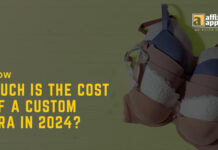There have been buttons for ages. Button making was once limited to the wealthy, with materials like wood, metal, and seashells being used. Buttons were created and mass-produced throughout the industrial revolution, making them more widely available and utilized.
Considering the vast variety of buttons available, it can be difficult to decide which ones are best. Countless various sizes, shapes, and materials can be used to create buttons. They can serve as functional fasteners for clothing or as beautiful ornaments.
What Is A Button?
A garment can be embellished with buttons, which are small bits of fabric. They are available in a variety of sizes, hues, and forms. A variety of materials can be used to make buttons.
How many types of shirt buttons are there?
Buttons are available in a wide variety of colors, shapes, and inventive materials. In this essay, I have divided the buttons into two categories: button types and composition.
Size is the most important factor to consider when selecting the best button for your clothing, followed by style and composition.
Antler Buttons

Antlers from deer are used to make genuine antler buttons. They frequently contain holes for sewing onto clothing and mimic the shape of a horn.
Modern buttons replicate the finish of the material by being made of wood or plastic.
Abalone Buttons

One kind of pearl finish can be found on an abalone button. It is comparable to a flat button with holes. Only this button is made from the shell of a sea ear mollusk. These buttons are ideal as accents on blouses and casual dresses.
Beaded Buttons

These buttons are embellished with beads or rhinestones, as their name suggests. utilized mostly for ornamental purposes.
You can also make your own by stringing plastic beads onto buttons with flat shanks.
Covered Buttons
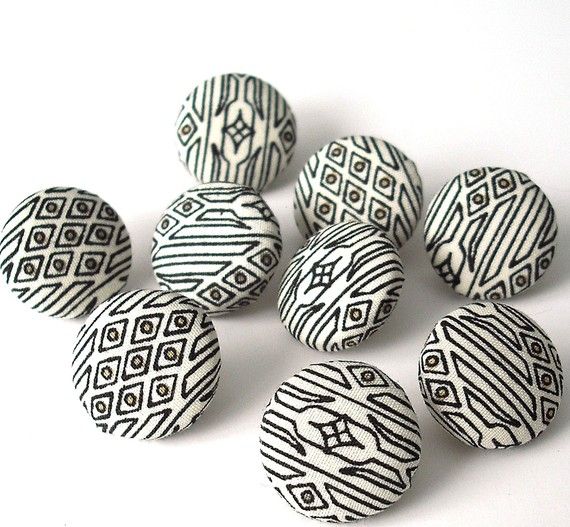
A covered button is a little, frequently spherical piece of cloth stitched over a button to offer ornamentation and added strength. Numerous materials, such as leather, felt, linen, and even metal, can be used to create the covering. Covered buttons are frequently utilized in upholstery as well as on clothes.
Glued fabric is used to cover buttons to create covered buttons. The covered button’s center is open, and the elements that hold it together can be seen on either side of it. The top and bottom of certain covered buttons are covered by an additional component.
Decorative Buttons

The sizes, forms, and materials used to create decorative buttons are endless. Search for them under the name novelty buttons as well. Every design you can imagine has them in it.
Lapel buttons, cuff links, and other ornamental uses for buttons are all possible. Many items have elegant buttons that give them a fitted look, such as jackets and shirts.
The uneven shapes of decorative buttons make it challenging to insert them through buttonholes. The fish and butterfly buttons are accents on the necklines that I’ve utilized.
Flat Buttons

The most typical sort of button is flat, and they typically have two or four holes in the middle and are extremely flat. They can be constructed of wood, metal, glass, or even ceramic, and are simple to connect by hand or with a sewing machine, particularly when using a thin thread or yarn.
One of the numerous benefits of choosing flat buttons is their versatility, which makes them look fantastic on shirts, dresses, pants, and skirts, among other garments.
Upgrade Your Clothing Line With Premium Buttons
Let's Discuss Your Button Needs
Speak To A Button Expert Today!If you can come up with an idea in your head for the flat buttons you desire, there is probably a business out there that offers that specific button because they come in a variety of materials, sizes, and colors. In addition to being widely used and robust, flat buttons are also very popular for a variety of reasons.
Flat buttons may have decorative ridges or edges, so they are not entirely flat. In these cases, you get the appeal of a stylish button and the usefulness of a flat one.
Horn Buttons
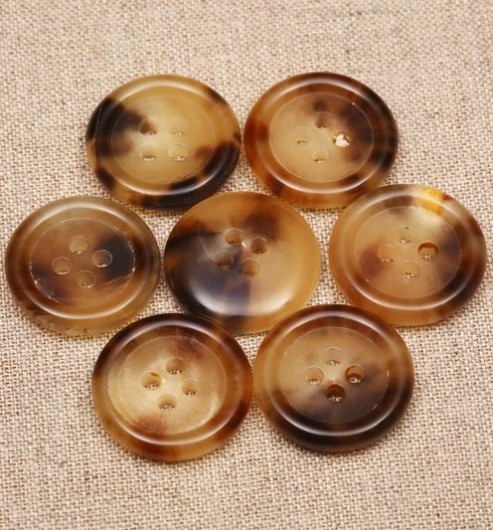
Since horn buttons are formed from the animal horn that has been boiled and reduced to a liquid state, they are most usually thought of as “buttons.” They are made by boiling the horn and then pouring the liquid horn into molds. You can dye the completed buttons in whatever color you like.
Hook Buttons

They consist of a small hook on one side and an eye-like fixture on the other, which is a small hole that the hook fits into, and are frequently referred to as a form of a button because of their functions. They are quite easy to use and come in two pieces that fit together after being sewn into the garment they are being used in.
The fact that hook-and-eye fasteners are so affordable and are available in so many different sizes and shapes makes it all but impossible not to find something you’ll enjoy. This is one of their main advantages. If you are making many outfits at once, the project will be inexpensive because you can buy this sort of button without breaking the bank.
They are suitable for every style of garment, from the smallest headband to the largest coat, and they are also simple to sew on, even for novice sewing aficionados.
Additionally, it is quite easy to locate hook-and-eye fasteners because they are now available at department stores, craft stores, novelty, and specialized shops, as well as convenience stores, making it simple to obtain exactly what you need.
Jeans Buttons
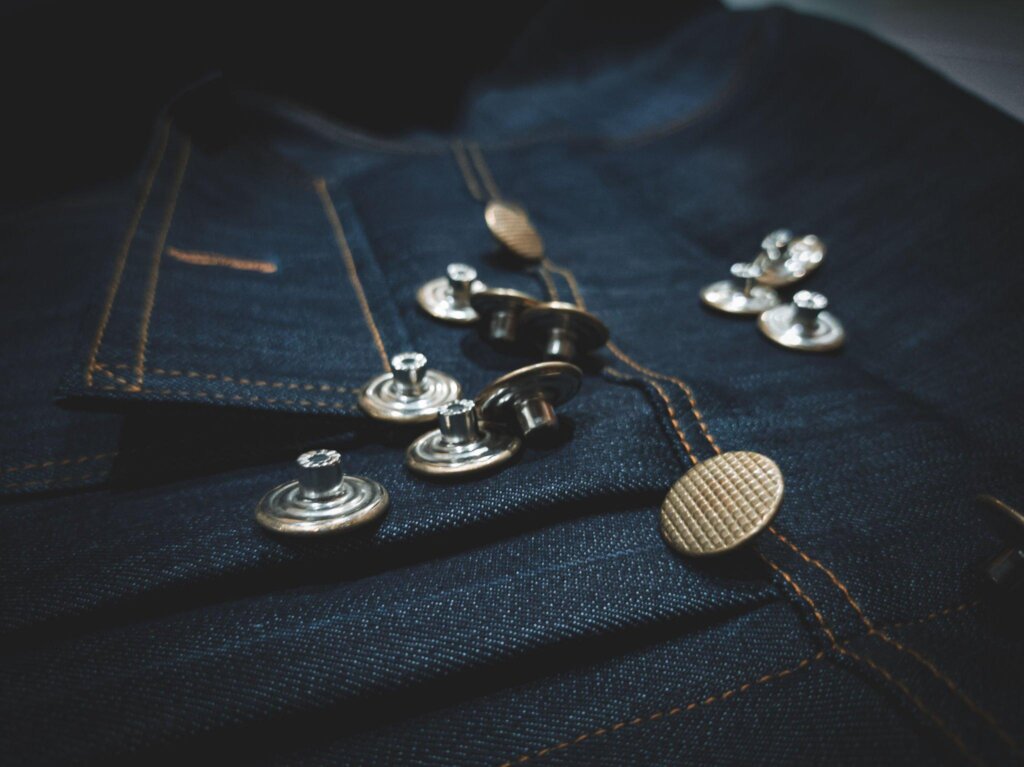
You probably have this kind of button at the closing of your denim jacket, shorts, or different types of pants buttons.
They are not sewn onto these buttons. And unlike other buttons and fastenings, attaching a button to a pair of jeans requires extra work and tools, including a hammer and an awl. Unless you use the more popular pin-on or screw-on faux jeans buttons, which are an alternative.
Knot Buttons
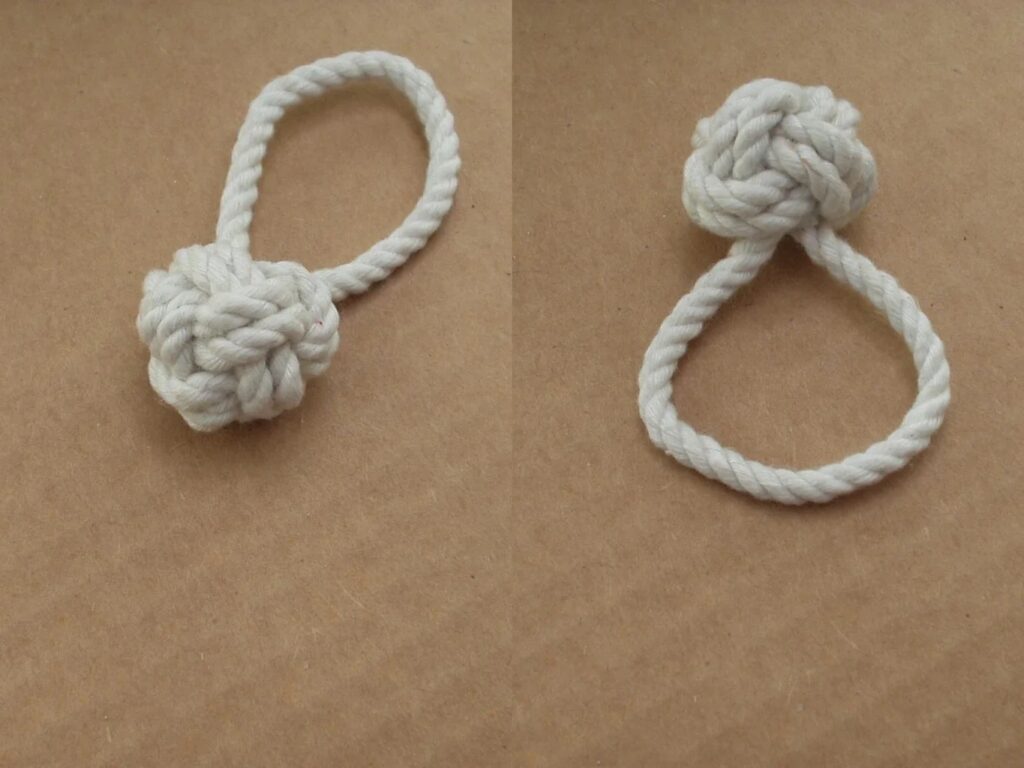
The basic knots used in Chinese macrame are the inspiration for this button, which is also referred to as a Chinese knot.
Currently, they are generally utilized as decorative accents, though they can also be used as buttons. These buttons are handmade with a paracord cord.
Lapel Buttons

These buttons are typically composed of a thin metal and feature logos or marketing materials, unlike the buttons you use to sew clothing. Political candidates who are running for any form of position find them to be quite appealing because they are virtually always individualized.
Typically, lapel buttons are fastened to the lapel using either a small, thin, pointed device that fastens to your clothes or a backing that you snap on, giving it a more durable attachment.
Although most lapel buttons are round, numerous alternative forms are also available. Lapel buttons range in size from less than one inch in diameter to three or more inches in diameter.
The best thing is that lapel buttons are incredibly cheap, and the majority of businesses who produce them work hard to offer very competitive prices, in part because they understand that the majority of customers who order them will order them in bulk. Lapel buttons are eye-catching, vibrant, and incredibly distinctive, and if you can come up with a design in your brain, the businesses that sell them can probably produce it for you.
Press Buttons

A form of clothing known as press-button clothing features buttons on the front, usually close to the waist. The buttons are often made of metal or plastic and are sewn to the fabric using tiny loops of thread. Press-button clothing can be altered to accommodate a range of body forms and is simple to put on and take off.
Rivets
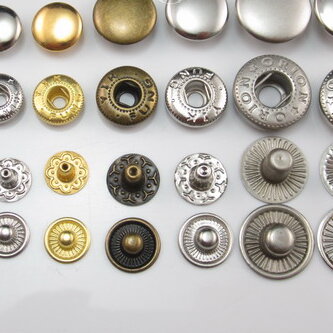
One of the nicest types of buttons for clothes is the rivet, which consists of a front and a rear. While the back is often composed of cloth, the front is frequently constructed of metal, plastic, or wood. The back of the button is placed through a hole in the front of the button. The outfit is then stitched with the button’s rear portion.
Screw-on Buttons
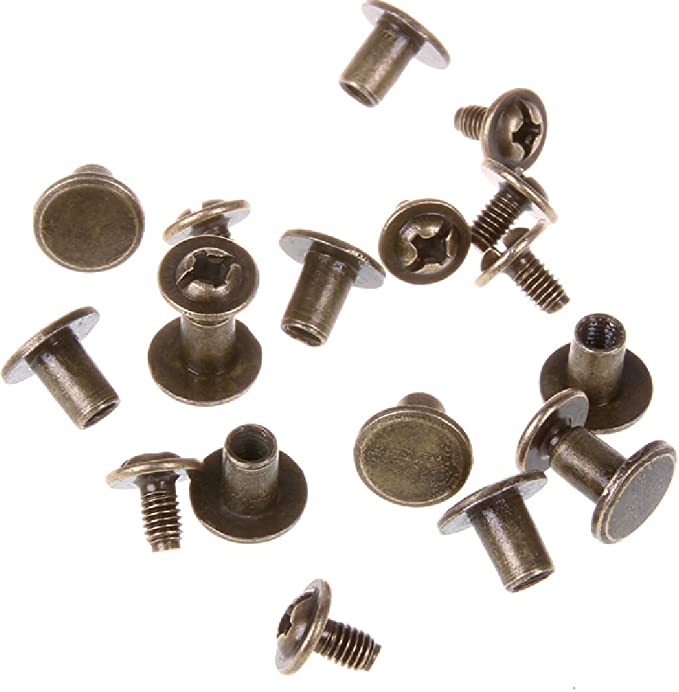
The top portion of a screw-on button has a hole in the middle, and the bottom portion, which has a screw-like mechanism, also has a hole in the center. To attach the button to the fabric, the two pieces are screwed together.
Shank Buttons

Instead of having holes in the center, a shank button has a small loop or hole on the back that you thread your needle through when attaching the button to your clothing or other items. Shank buttons are useful when you want your buttons on clothing to have a little elevated appearance since they can also have a raised part in the back of the button where the hole is located.
In other words, the buttons do not rest flat on the clothing; rather, they rise just a little bit above the garment, giving it a really attractive appearance. Although attaching a shank button requires a somewhat different technique than attaching a flat button, with some research and practice, the process may be relatively straightforward.
The one feature that all shank buttons share is that they are slightly raised against the fabric rather than lying flat on it, giving the garment a touch of ambiance and class. Shank buttons can be made of a variety of materials and come in a wide variety of colors and sizes.
In addition, shank buttons are created very well, in part due to the loop or stem that the sewing thread must pass through, therefore they typically consist of materials that are durable and robust. In conclusion, purchasing shank buttons is a wise decision for many reasons, not the least of which is how wonderful they appear on your clothing.
Snaps

Similar to the hook-and-eye fasteners, snaps or poppers have two sections that are sewn into the paper and are used to close and secure the document. Poppers typically have a spherical shape and male and female components that adhere to one another. Finding poppers is one of the nicest things because they come in several lovely hues when manufactured of plastic as well as silver metal.
The plastic ones are unable to be trusted. These snaps are just as trustworthy and durable as metal ones, and the range of colors can enhance the beauty of any garment. Snaps work well regardless of the clothing you are sewing them into since when properly sewn on, they are just as solid as other button types of clothing, even if you are a novice sewer.
Studs
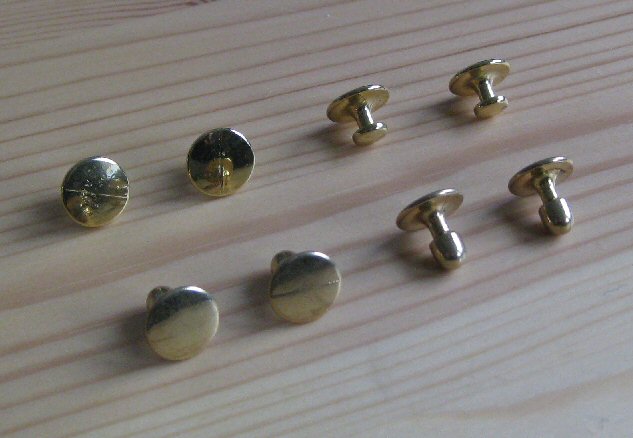
Even though stud buttons are typically linked with jeans, you may use them on coats and skirts made of denim. One of the two components of a stud button connects to the other. But stud buttons are forced together once they are inserted into the buttonhole, as opposed to hook-and-eye fasteners, which are stitched in two different locations.
Once they are placed, it is quite impossible to remove them from the buttonhole because a special instrument used to press them together firmly pushes them together. Some of these buttons can be sewn in using extra-strong thread or yarn, but the results are typically more durable when the buttons are pressed together using specific tools.
In addition to being used to fasten pants together, stud buttons are available in a variety of sizes. On jean pockets and even the sides of the jeans themselves, they can be employed as accents. They are used to adorn denim pants, purses, jackets, and other denim things. They are typically circular and come in colors like silver and gold, however, some of them come in dozens of other hues.
If you do your research, you can discover dozens of stud buttons in dozens of sizes and colors, and their great durability and longevity is still another advantage of selecting this different kind of buttons
Toggles

They are long, slim, typically spherical buttons that are used most frequently in buttonholes or with loop fastenings. They are a far more secure option as well, and because of their length, they can fit through fewer holes than a round or square button.
Toggle buttons are a terrific option if you want a distinctive, lovely, attention-grabbing button for your garment because they are frequently utilized as statement pieces. Although they are affixed to the garment much like a flat button, many of them have two holes in the center and are made of materials like wood.
You may easily get a solid, light-pink toggle or a toggle with a printed design because toggles are often constructed of wood or plastic and come in several colors and designs. Toggles are an excellent option for the majority of your sewing projects since they are attractive, simple to use, and adaptable. You can also use them for a range of arts and crafts projects now, so they are no longer limited to apparel.
Compositions of Buttons
There are 15 distinct all kinds of buttons for clothing, and the materials include metal, polyester, fabric, leather, pearl, wood, horn, coconut, rubber, plastic, and pearl. They can generally be divided into categories based on the button’s material, purpose, size, eyelet, form, etc. The primary accent in clothing design is the button. The aesthetics of clothing are greatly influenced by it. Button appearances in daily life are commonplace. Colors, sizes, materials, and other characteristics come in a variety. Various clothes button types labels are listed below:
15 different types of buttons are available for different clothing manufacturers, according to the material.
Coconut Buttons

An essential component of many different styles of clothing is the coconut button. Usually crafted from coconut shells, it is a tiny, circular button. Shirts, skirts, blouses, and other clothes can be fastened with coconut buttons. It can also be incorporated into jewelry designs or utilized as decoration on apparel.
Ceramic Buttons
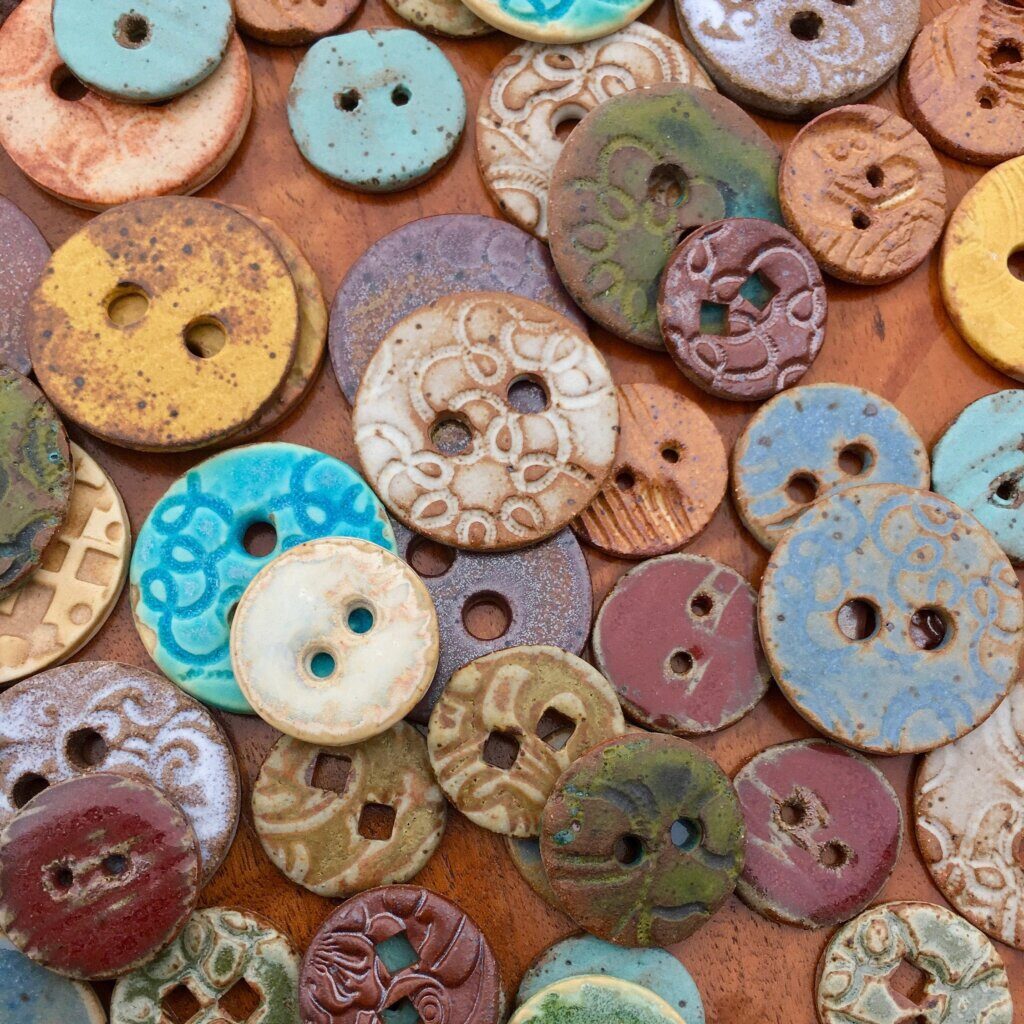
The material used to make ceramic buttons is ceramic clay. These buttons are primarily hand-woven. There are many available shapes, colors, and fashions. They frequently have spherical, star, leaf, heart, square, polygonal, and even fish-shaped shapes. Also available are floral fashions. These are used to make elegant and lightweight dresses.
Enamel Buttons

A metal base is commonly used to create enamel buttons, which have an enamel coating applied to give them a glossy appearance. The buttons come in a variety of hues, making them ideal for adding a splash of color to any ensemble.
Fabric Buttons

Fabric buttons come in a variety of forms, each having special qualities of its own. A single piece of fabric is used to create the flat-backed button, which is the most popular kind of fabric button. Because they lay flat on the fabric and do not protrude, these buttons are frequently used for clothing and other products.
Glass Buttons
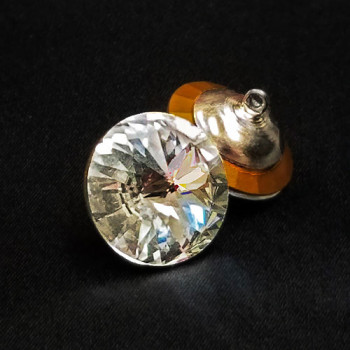
Glass buttons come in a wide range of colors, sizes, and shapes. Because they are stylish, eye-catching, and exquisite, these buttons will offer a new quality to your consumer items. Because the glass used in buttons may be strong, scratch-resistant glass, you shouldn’t be concerned about safety.
Leather Buttons
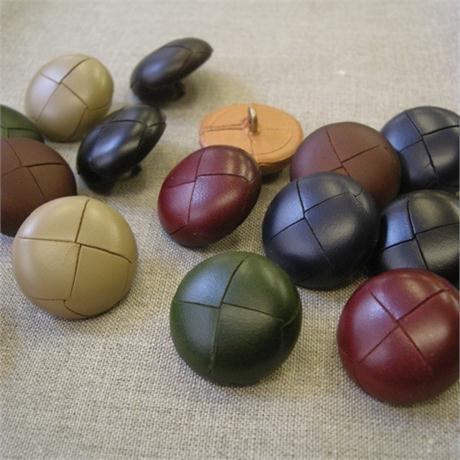
For example, outerwear like coats and types of jacket buttons frequently employ leather buttons. They can be utilitarian, long-lasting, and simple to maintain while still adding a touch of luxury and beauty to an outfit.
Metal Buttons

A type of button composed of metal is a metal button. Metal buttons are frequently used on apparel, such as shirts and jackets, but they can also be found on wallets and bags. Metal buttons can be plain or embellished and available in a range of sizes, shapes, and colors.
Additionally, this is a recommended button. Copper, aluminum, zinc alloy, iron, and chrome steel are frequently used to make metal buttons. They frequently range in size from large to little, round to oval, and light to black.
These are mostly used in denim products like jeans and trousers. These are also available with two or four holes combined. Shank buttons, which are used on denim, have metal shanks. Animal skin clothing uses metal buttons as well. Metal snaps are quite well-liked even if the average plastic snap is still readily available nowadays.
Nylon Buttons

A common type of button found on garments is nylon. Because they are composed of synthetic plastic, these buttons are frequently referred to as “plastic buttons.” Since nylon buttons are robust and long-lasting, they are perfect for heavy-duty clothing like coats and jackets. They are also heat and water-resistant, so washing them won’t cause them to deform or melt.
Pearl Buttons

A mother-of-pearl button is a small, circular button that is typically used. In particular, in formal attire like suits and shirts, pearl buttons are frequently utilized as decorative accents. They can be used to fasten gloves and other items of clothing as well. Either by hand or by machine, pearl buttons can be attached to clothes.
Plastic Buttons

Many different types of clothing and items use plastic buttons on their buttons. They can be produced using many types of plastic and come in a wide range of hues, dimensions, and shapes. Plastic buttons are readily available, simple to use, and inexpensive. Plastic buttons can be designed in a variety of ways and are versatile enough to be stitched or glued onto the fabric. Plastic buttons are available in a variety of hues, sizes, and designs to meet your requirements.
Polyester Button

Strong and long-lasting buttons made of polyester. The dazzling appearance of polyester buttons, meanwhile, may not be what you’re hoping for. Try painting the button with a coat of matte nail polish if you want a more matte effect. Before putting on the garment, let the polish completely dry.
Resin Button
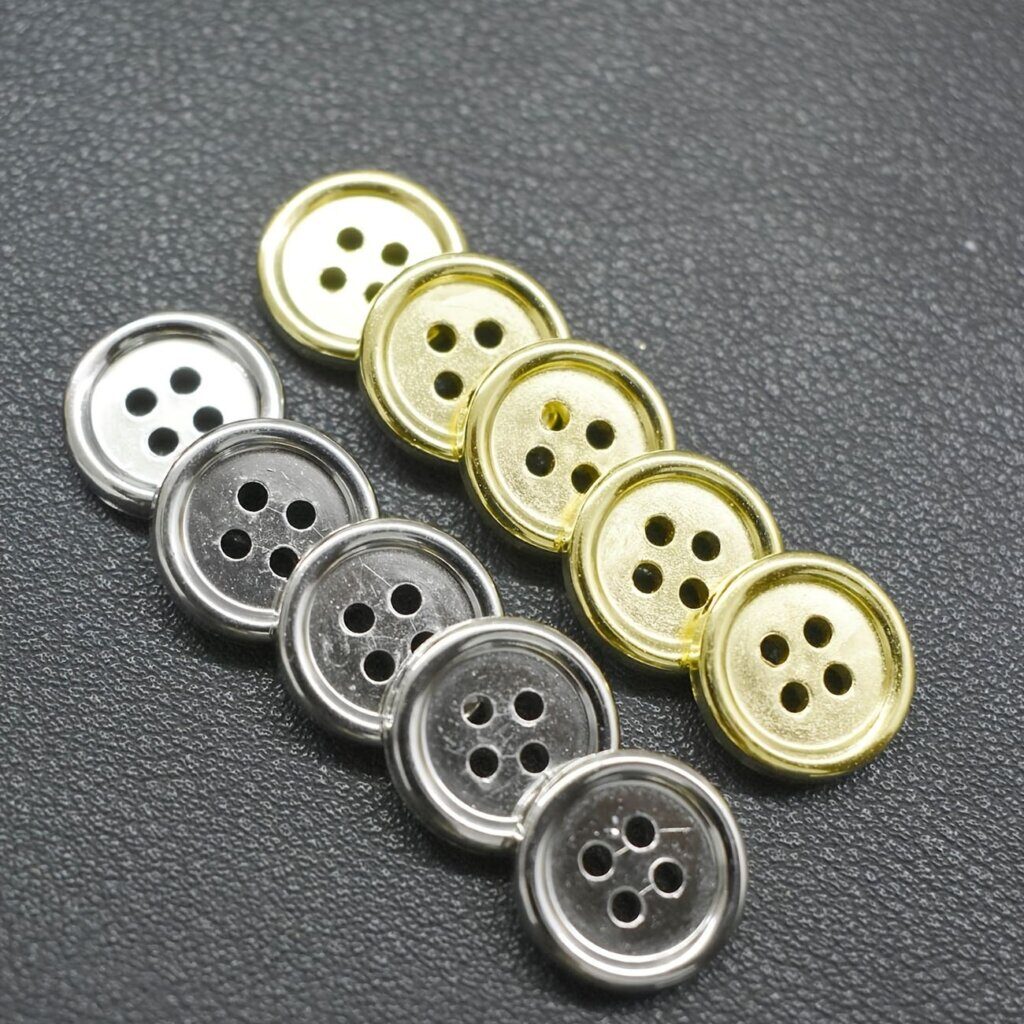
Consider utilizing resin buttons if you’re seeking a novel method to give your garment a dash of style. Plastic, metal, and even wood are among the materials used to make resin buttons.
Rubber Button

In outerwear like coats and raincoats, rubber buttons are frequently used. Some shoe styles, like rubber-soled sneakers, also use them. Rubber buttons are superior to other types of buttons in that they are less prone to come undone, making them perfect for clothing that will be worn in inclement weather.
Shell Buttons

Mollusk shells, such as those from oysters and clams, are used to make shell buttons. They are common today because of their distinctive appearance and are available in a range of colors, sizes, and shapes.
Wooden Buttons
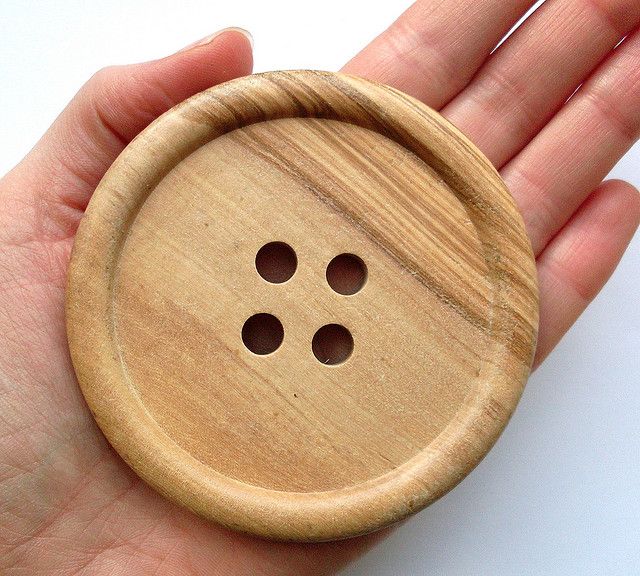
Using wooden buttons to embellish your clothing is a lovely and distinctive way to bring the outside inside. Maple, oak, cherry, and walnut are just a few of the woods that can be used to make them. There are numerous sizes and forms of wooden buttons available. You can select buttons that are square, rectangular, round, or oval. Additionally, you can select painted or carved buttons. A distinctive touch to your garment can be added with wooden buttons.
What Type Of Button Is The Most Popular?
The most common type of button is plastic, which is frequently more economical than metal. Wood buttons are another choice, but they are less prevalent than metal or plastic buttons. Although less resilient than other types of sewing buttons and often more elusive, glass buttons are also available.
FAQs
Why It Is Called A Button?
From Old French boton, originally “a bud” (12c., Modern French bouton), from bouter, boter “to thrust, strike, push,” common Romanic (cognate with Spanish boton, Italian bottone), ultimately from a Germanic source, from Proto-Germanic *buttan, from PIE root *bhau- “to strike,” comes the phrase “knob or ball attached to another body.” Accordingly, a button’s etymology describes it as something that thrusts up or out.

What Are Buttons With Varied Sizes And Holes?
The measurement for buttons is known as a ligne. The diameter of a button is represented by one ligne, which is equal to 0.635 mm or 0.025 inches. According to the ligne, buttons vary widely. Buttons are referred to as 12L (Ligne), 14L, etc. by experts. Standard button sizes for shirts are 16 ligne or higher, 15 ligne for sleeves, and 12 ligne for collars on button-down shirts. The button is 24L on the pants.
What Do 4-Hole Buttons Go By?
Sew-through buttons have two to four holes that enable the button to be attached to the garment via sewing. Non-sew-through buttons feature a shank on the back that enables sewing the button to the garment.
Final Words
There are many different kinds of buttons for clothing, including knitted buttons, metal, plastic, and wooden ones.
Although plastic buttons are the least expensive alternative, they may not last as long as metal or wooden buttons. Although metal buttons cost more than plastic ones, they are more aesthetically pleasing and robust. Although wooden buttons are the priciest option, they are also the most robust and have a distinctive appearance.
Although buttons only make up a small portion of our clothing, they are crucial to maintaining the integrity of our outfits. Selecting the appropriate type of button for the work is essential to your sense of style because different button types have various benefits and drawbacks.


